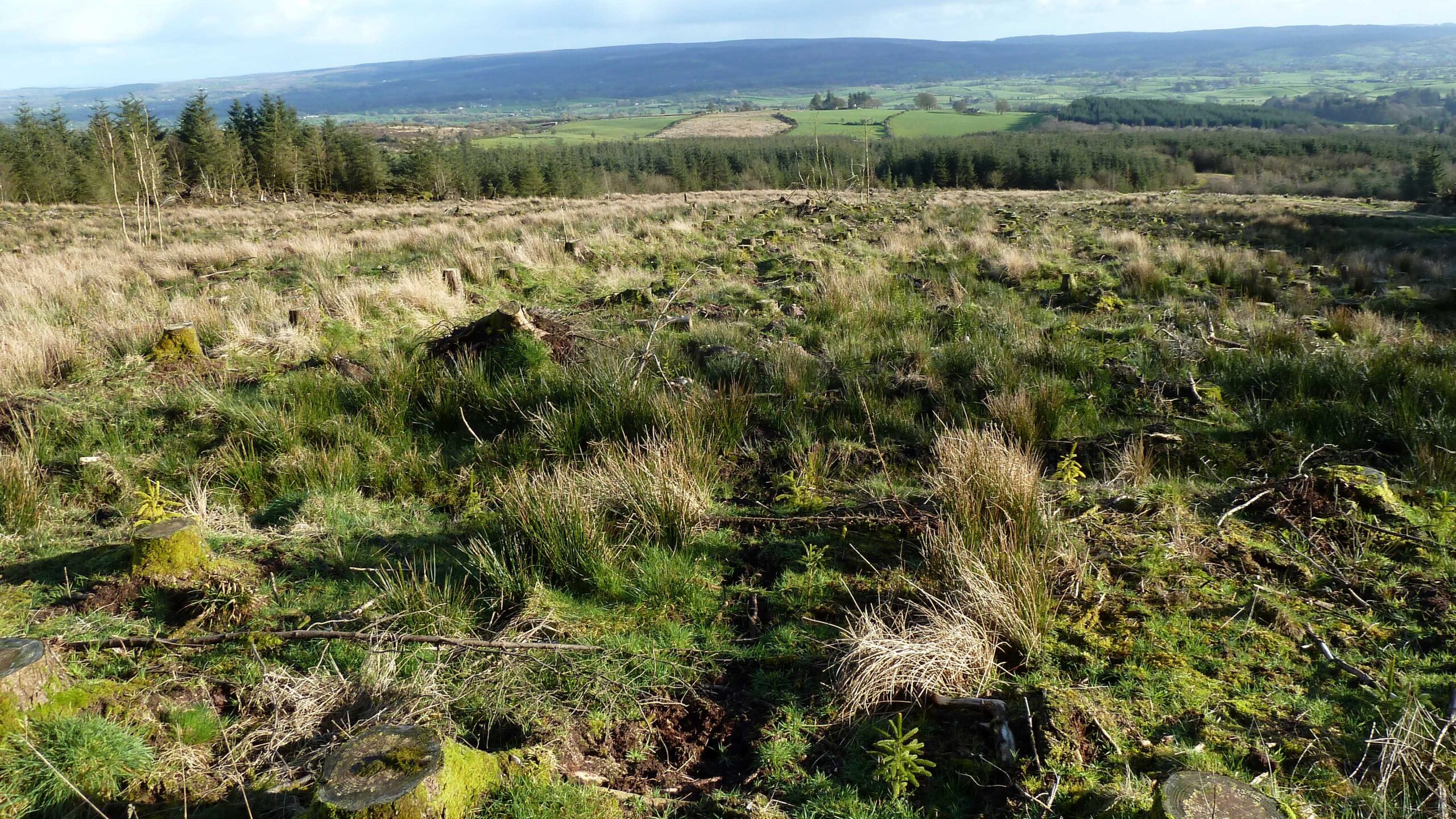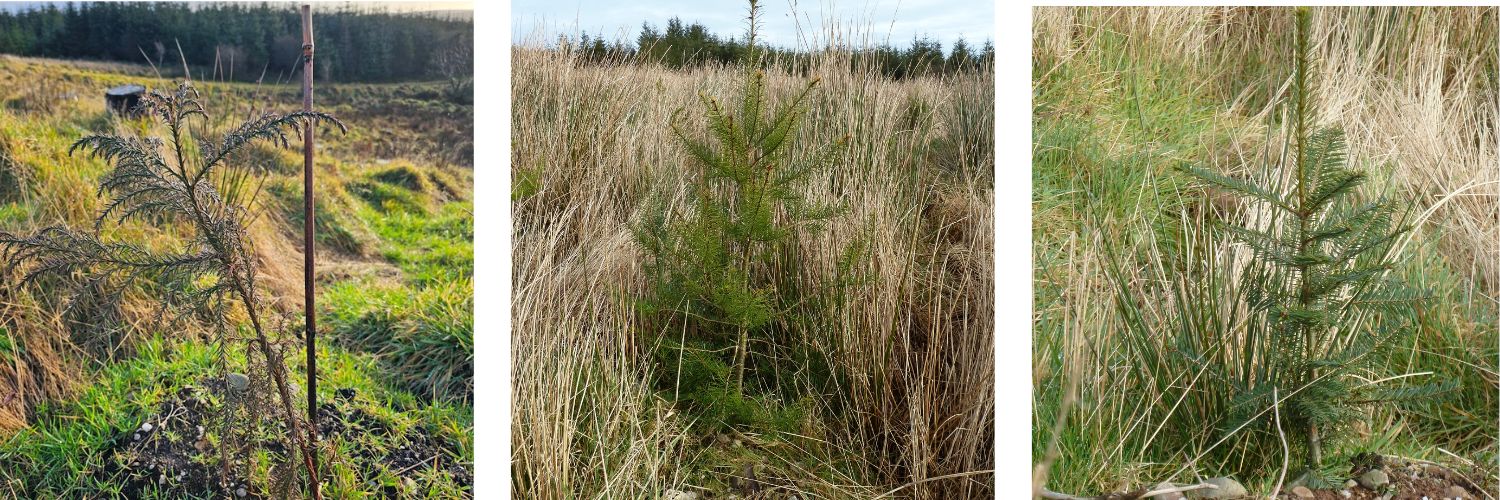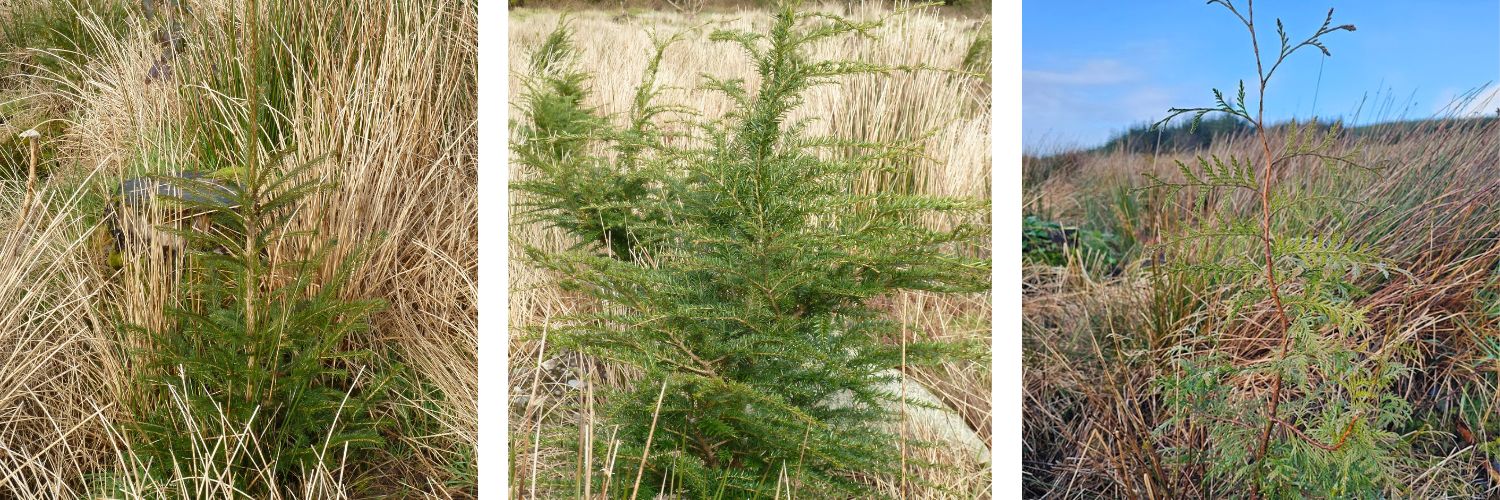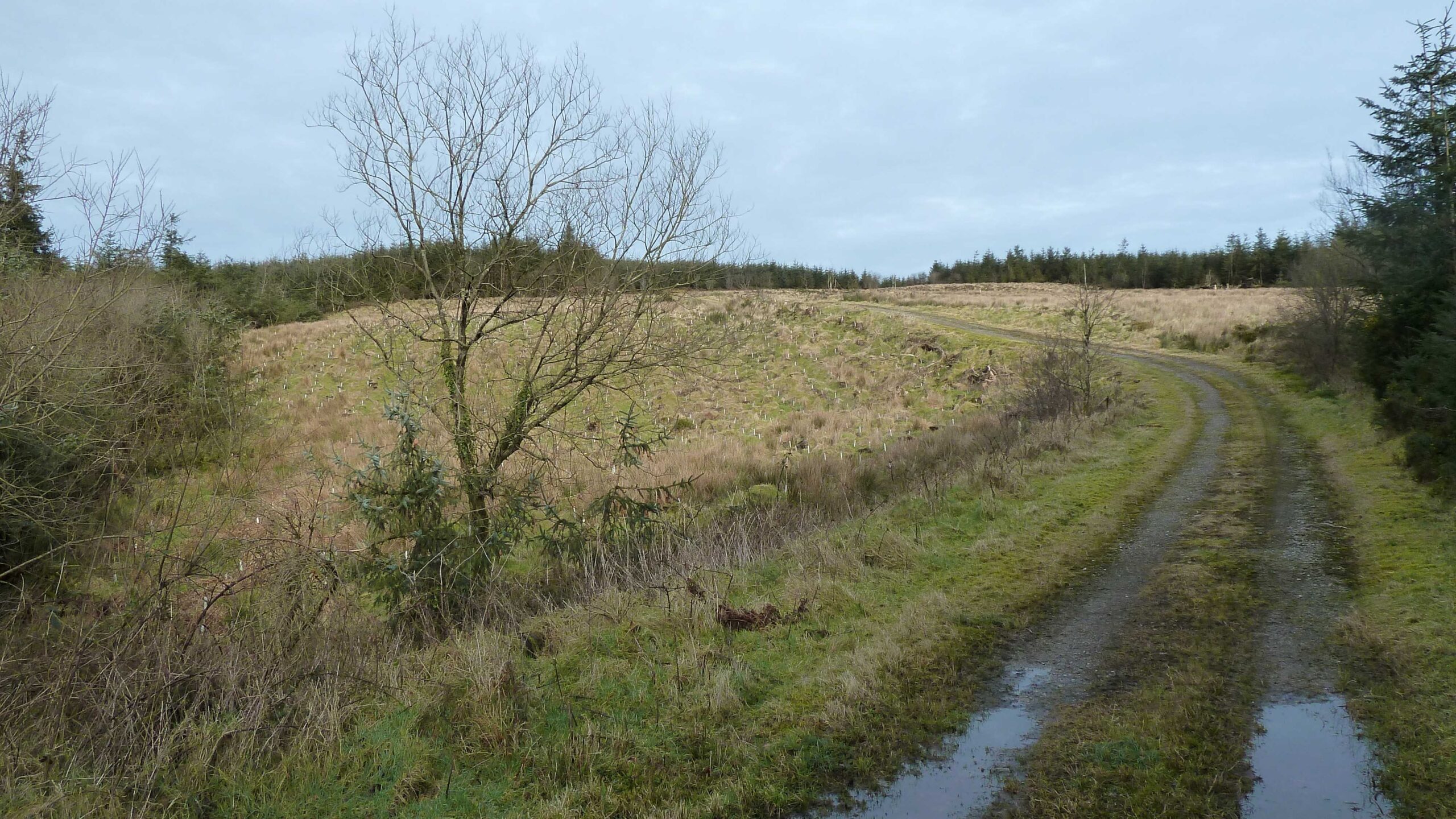Exploring Alternatives to Sitka Spruce
“There is currently a major reliance on Sitka spruce for timber production, especially by timber processors, so we decided to investigate if there are alternative species which could be of value to that industry. This planting presents an opportunity to see how well other good timber producing trees can do in our conditions,” says owner, James Hamilton Stubber.

Above: the Windy Gap compartment where seven species are being trialled for productive timber
The Aughentaine Estate in County Tyrone, Northern Ireland, has restocked a 4.44 hectare (ha) compartment with nearly 10,000 conifers after successfully applying for our Grants for Resilient Woodlands. Seven species have been planted with each species being allocated a plot and planted as a pure stand.
The site, known as Windy Gap, rises from 210 to 260 metres above sea level with a southerly aspect. Soil is acidic with a clay sub-soil and the annual rainfall is approximately 127 centimetres (50 inches). Sitka spruce grows exceptionally well locally and is present in adjacent planting compartments.
The planting is on very marginal hill land. It is within an established area of circa 200ha of commercial conifer woodlands stocked nearly exclusively with Sitka. The plantings are the third crop on the site.
The first crop of Sitka spruce was planted in 1963 but was windblown in 1988. The second crop was subsequently planted in 1989 and included some innovative elements. Half the area was planted with grey alder every 4th row amongst the Sitka to act as a nitrogen fixer for the young trees. The other half was left untreated. The compartment was clear felled in the spring of 2021. There was no discernible difference in the quality or tonnage from the two halves of the compartment.
James Hamilton Stubber comments: “When we restocked in 1989 it was thought that a second crop might require an input of nitrogen, so we decided to experiment with a natural solution rather than an artificial application. However, it would seem that either they didn’t require this treatment, or the alder didn’t have any benefit.”
Species Choice

Above: Planted in 2022-2023. From left, Japanese cedar, Dougas fir and grand fir
In their selection of species, the estate sought advice from its forestry consultants. This complimented the experience and knowledge of how various species performed gained from over the 60 years of managing their woodlands.
Between 1,200 and 1,700 bare-rooted or cell grown plants of each species were planted in pure blocks of around 0.50ha to 0.75ha. Planting was carried out between February 2022 and December 2023. This extended timeframe was mainly due to the unavailability of certain species. The varieties, number planted and provenance are as follows:
Species Number Growing Method Provenance
Grand fir 1,500 cell UK 210
(Abies grandis)
Japanese cedar 1,220 cell Denmark, Bregentved
(Cryptomeria japonica)
European larch 1,400 cell Czech Republic
(Larix decidua)
Western red cedar 1,200 cell UK OR3 Clanna
(Thuja plicata)
Western hemlock 1,700 cell UK 20-01 Darnaway Estate
(Tsuga heterophylla)
Douglas fir 1,200 bareroot Region 10
(Pseudosuga taxifolia)
Norway spruce 1,400 bareroot Region 840 01
(Picea abies)
Total 9,620
Pests and Diseases

Above: From left, Norway spruce, Western hemlock and Western red cedar
This conifer plantation is on very exposed marginal hill land and the estate hopes it will not be prone to pests and diseases. The possible exception is pine weevil which will be monitored every six months for the first 5 years. They also hope the European larch will be resistant to phytophthora. The estate has suffered from this disease in their hybrid larch but has observed that their European larch have so far been immune to it.
A deer management plan is in place for a migrant deer population however, deer and weevil damage on the site tends to be minimal and no tree protection has been required.
The performance of this project will be shared with other woodland owners, timber growers and processors in Northern Ireland.
Care and Maintenance

Above: Forest track through Windy Gap
To protect against wind, a proper wind-hard edge will be maintained around the compartments.
James Hamilton Stubber explains “It is our experience that, on the more exposed compartments, any interventions for thinning need to be carefully designed so as not to disturb the compartment edge facing the prevailing winds, so letting wind into the compartment.”
A beat up has already been carried out in most of the blocks and will be completed by the spring of 2024 once the species required have been sourced. A further beat up may be carried out in 12 to 18 months’ time. An assessment on whether any weeding will be required will be made in the late spring of 2024.
Beating up and weed control will be continued for up to 5 years following replanting. Monitoring of growth will be undertaken annually from Year 5 onwards.
More Information
If you are interested in learning more about this project, please email us at rfshq@rfs.org.uk
Grants for Resilient Woodlands
Our Grants for Resilient Woodlands are funded by Train Hugger and Green The UK. They are open for applications from RFS and Royal Scottish Forestry Society (RSFS) members all year round.
These grants are to help people plant trees that will survive and thrive into the future. Creating better, more resilient treescapes for our environment, for people and for the economy.



